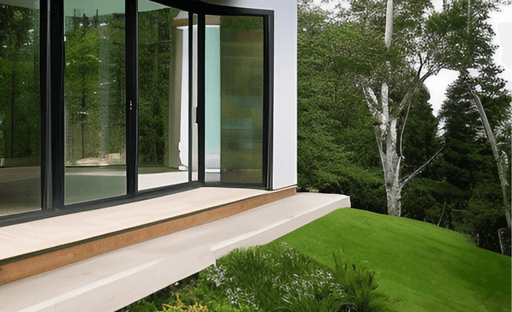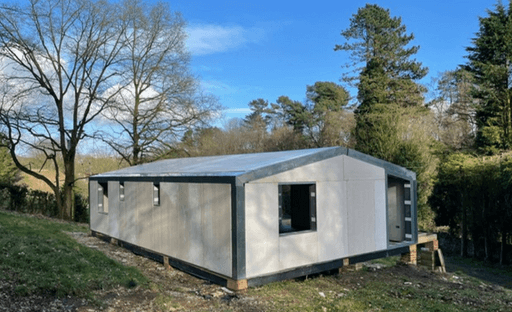How to build a house on a slope
Building a house on a slope can be an intimidating prospect, but with the right strategies and preparation, it can also be incredibly rewarding. In this blog article, we will explore the challenges of constructing on an incline and provide tips for optimizing your build. We’ll discuss how to prepare your site for success as well as innovative solutions that make building on uneven ground more manageable. Read on to learn more about how you can construct a beautiful home even when faced with challenging terrain.
Building a house on a slope can be an exciting and challenging project. It requires careful planning, creative problem-solving, and the right materials to ensure that your home is safe and secure. Here are some tips for how to build a house on a slope successfully:
1. Assess the Slope: Before beginning construction, it’s important to assess the slope of your property in order to determine what type of foundation will work best for your home. You should also consider any potential drainage issues or other challenges associated with building on sloped terrain.
2. Choose Your Foundation Type: Depending on the size of your home and its location relative to the slope, you may choose from several different types of foundations such as slab-on-grade or pier, screw pile & beam foundations which are designed specifically for sloped sites. Be sure to consult with an experienced contractor who can help you decide which option is best suited for your needs before making any decisions about the foundation type or materials used in construction.
3. Prepare The Site: Once you have chosen a suitable foundation type, it’s time to prepare the site by levelling out any uneven ground and removing debris from around where you plan on the building so that there won’t be anything blocking access during construction later down the line. Additionally, make sure all necessary permits have been acquired before starting work as this could save time (and money) further down in the development process if something goes wrong due to local regulations not being met properly beforehand!
4. Build Retaining Walls: If needed, retaining walls should be built prior to constructing the main structure itself – these walls provide additional support against soil erosion while helping maintain stability throughout the entire project’s duration; they also serve aesthetic purposes when done correctly! Make sure these structures are made out of strong enough materials like concrete blocks/bricks depending upon their purpose – either way, though always hire a professional engineer/architecture firm just double check everything meets safety standards set forth by local government agencies responsible for overseeing such projects within the area where the property resides!
5. Construct The Home: After preparing the site, obtaining permits, and designing appropriate retaining wall(s); now comes the actual part – constructing the main structure itself! This involves laying out a framework according to design plans then adding roofing material followed by windows doors etcetera until the finished product looks exactly like envisioned at the start journey. Of course, don’t forget about interior finishes too including flooring paint colours fixtures etcetera so the end result looks amazing inside and outside alike.
Building a house on a slope can seem daunting but following these steps will help ensure that everything runs smoothly during this exciting endeavour.
Understanding the Challenges of Building on a Slope
Building a house on a slope can be an exciting and rewarding experience, but it also presents unique challenges that must be addressed. Understanding these challenges is essential to ensure the success of your project.
One of the most important considerations when building on a slope is drainage. Poorly managed water runoff can cause erosion, flooding and other problems over time. It’s important to design your home with adequate drainage systems in place to prevent any potential issues from occurring down the line.
In addition, you should take into account how much soil will need to be moved during construction in order for your foundation and walls to remain level as they are built up the hillside or down into it depending on where you are located geographically speaking. This process requires careful planning so that no structural damage occurs due to uneven weight distribution or shifting ground beneath your home’s foundation.
Finally, if you plan on adding decks or patios onto your property, make sure that they have been designed with safety in mind. Slopes often require special engineering techniques such as retaining walls or terracing in order for them not only to look aesthetically pleasing but also to remain safe for use by family members and guests alike.
Overall, understanding all of these factors before beginning construction is key when it comes to building a house on a slope. With proper planning and execution, homeowners can enjoy their dream homes while avoiding any potential pitfalls associated with this type of build!
Strategies for Optimizing Construction on an Incline
Building a house on an incline can be challenging, but with the right strategies in place, it is possible to optimize construction and ensure successful completion. Here are some tips for optimizing construction on an incline:
1. Choose the Right Foundation: A strong foundation is essential when building a house on an incline. It’s important to choose a foundation that will provide adequate support and stability for the structure being built. Consider using concrete footings or piers as these are often more suitable than traditional foundations for slopes or uneven terrain.
2. Utilize Retaining Walls: Retaining walls can help stabilize soil and prevent erosion during the construction of your home on an incline, while also providing additional structural support if needed. Be sure to use materials that are designed specifically for retaining walls so they remain durable over time and won’t shift due to weather conditions or other factors such as water runoff from nearby hillsides or mountainsides.
3. Design Around Slope Gradients: When designing your home’s layout, take into account any changes in slope gradients throughout the area where you’re building so you know how best to position stairs, ramps, decks, patios, etc., within your design plans. This will help ensure safe access around your property without compromising its overall aesthetic appeal.
4.. Use Appropriate Materials: Selecting appropriate materials is key when constructing a house on an incline; heavier materials such as stone may be necessary depending upon local regulations regarding seismic activity in certain areas. Additionally, make sure all components used (elevated decks included) meet local codes regarding weight limits based on their location relative to grade levels of surrounding landforms.
5.. Monitor Drainage Patterns: Proper drainage must be taken into consideration before beginning any type of construction project; this includes monitoring existing drainage patterns near where you plan to build so potential issues can be addressed prior to starting work. Make sure gutters are installed correctly along rooflines too – this helps direct rainwater away from foundations which could otherwise weaken them over time if left unchecked.
Preparing Your Site for a Successful Build
Preparing your site for a successful build is an essential step when constructing a house on a slope. It’s important to take the time to plan and prepare the area before you begin any construction work, as this will ensure that your project runs smoothly and safely. Here are some tips on how to get ready for building on sloping land

1. Survey the Land – Before you start any work, it’s important to survey the land so that you can identify potential problems or hazards associated with building in such terrain. This includes checking for underground utilities, assessing soil stability, evaluating drainage patterns and looking out for signs of erosion or flooding risks.
2. Create Access Points – You’ll need access points in order to move materials up and down slopes during construction; these should be planned carefully beforehand so they don’t interfere with existing structures or cause damage to surrounding vegetation during their installation process.
3. Clear Debris – Clearing away debris from around your construction site is essential if you want safe access routes throughout the project duration; this means removing rocks, roots and other obstructions which could otherwise become hazardous when working at height or carrying heavy loads up steep inclines.
4. Level Out Areas – If possible try levelling out areas where necessary using earthmoving equipment prior to starting any major works; this will make it easier (and safer) when laying foundations later down the line as well as providing more space for workers who may have limited mobility due to uneven ground conditions.
5. Secure Permits – Depending upon local regulations, permits may be required before beginning certain types of projects; check with local authorities ahead of time so there are no delays once works commence!
By taking these steps into consideration before starting your build, you can help ensure that everything goes according to plan while also keeping everyone involved safe throughout its duration.
Adopting Innovative Solutions to Constructing on Uneven Ground

Constructing a house on uneven ground can be a daunting task, but with the right innovative solutions, it is possible to build a safe and secure structure. With the help of modern engineering techniques and materials, builders are able to create strong foundations that will last for many years.
One of the most important considerations when constructing on uneven terrain is drainage. Poorly designed drainage systems can lead to water pooling around your home’s foundation which could cause structural damage over time. To ensure proper drainage, consider using permeable pavers or installing an underground drain system that collects runoff from higher areas and directs it away from your home’s foundation.
In addition to ensuring proper drainage, another key factor in building on uneven ground is soil stabilization. Unstable soils can make construction difficult as they may shift or erode over time leading to potential problems down the road such as cracks in walls or floors due to settling soil beneath them. To combat this issue you may need additional support structures such as retaining walls or piles driven into the ground for extra stability during construction and beyond the completion of your project.
Does it cost more to build a house on a slope?
Building a house on a slope can be an exciting and rewarding experience, but it also comes with its own set of challenges. One of the most important questions to consider is whether or not it will cost more to build a house on a slope than on flat land.
The answer depends largely on the size and complexity of the project, as well as how steeply sloped your property is. Generally speaking, building on slopes tends to require additional costs for excavation and foundation work due to increased labour requirements. In some cases, retaining walls may need to be built in order for construction crews to access certain areas safely. Additionally, if you’re planning any kind of landscaping around your home then you should factor in extra costs associated with terracing or other earthworks that are necessary when working with hilly terrain.
It’s also worth noting that depending upon local regulations there may be additional fees associated with building permits or inspections when constructing homes in hilly areas due to their unique characteristics which could add further expense to your project budget. Ultimately however these added costs are usually offset by stunning views from higher elevations so it’s definitely something worth considering if you’re looking for an impressive home site!
is it advisable to build your house on a slope… why?
Building a house on a slope can be a great way to take advantage of the natural landscape and create an interesting, unique home. However, it is important to consider all aspects before making this decision. Slopes can present some challenges when building due to their uneven terrain and potential for landslides or flooding.
When considering whether or not you should build your house on a slope, there are several factors that need to be taken into account. Firstly, the soil type will determine how stable the ground is and if any additional support needs to be added in order for the structure of your house to remain safe over time. Secondly, you must also consider drainage as water runoff from higher elevations could cause damage if not properly managed with proper drainage systems in place. Finally, local regulations may have restrictions regarding building on slopes so make sure you check these before beginning construction work.
Overall while there are some challenges associated with constructing a home on sloped land it can still provide many benefits such as stunning views and increased privacy due to its elevated position above other properties nearby. If done correctly it can also add value by creating an attractive living space that stands out from others in the area. Ultimately, deciding whether or not building your house on a slope is advisable comes down to personal preference but careful consideration should always be given beforehand.
Can you build a house on a 45-degree slope?
Building a house on a 45-degree slope can be quite challenging, but it is not impossible. It requires careful planning and consideration of the terrain to ensure that the structure is safe and secure. You must also take into account any potential hazards such as flooding or landslides, which could cause serious damage to your home.
When constructing a house on an incline, you need to consider how you will support the structure against gravity. This may involve using retaining walls or other stabilizing structures in order to keep the foundation from shifting over time. Additionally, you should make sure that all materials used are strong enough for this type of environment; otherwise, they may become weakened by weathering or erosion over time.
You’ll also need to think about drainage when building on a steep slope; otherwise, water can accumulate around your foundation and cause problems with stability down the line. Installing proper drainage systems can help prevent this issue from occurring in the first place while ensuring that any excess moisture is quickly removed away from your home’s base before it has an opportunity to do harm.
Finally, if possible try adding landscaping features such as terraces or stairs which will help break up some of the grade change so that it doesn’t feel too overwhelming when walking up and down between levels inside your home’s interior spaces!
Finally don’t forget about the seismic activity when constructing on sloped terrain; if you live in an area prone to earthquakes then take extra precautions by reinforcing any structures built with steel beams anchored deep into the bedrock below grade level for added protection against tremors shaking up your house! Innovative solutions like these will help ensure that whatever type of structure you’re building stands tall even amidst turbulent conditions like those found atop hillsides – so don’t be afraid to take advantage of all available resources before starting work. Contact Matrix Structures UK






